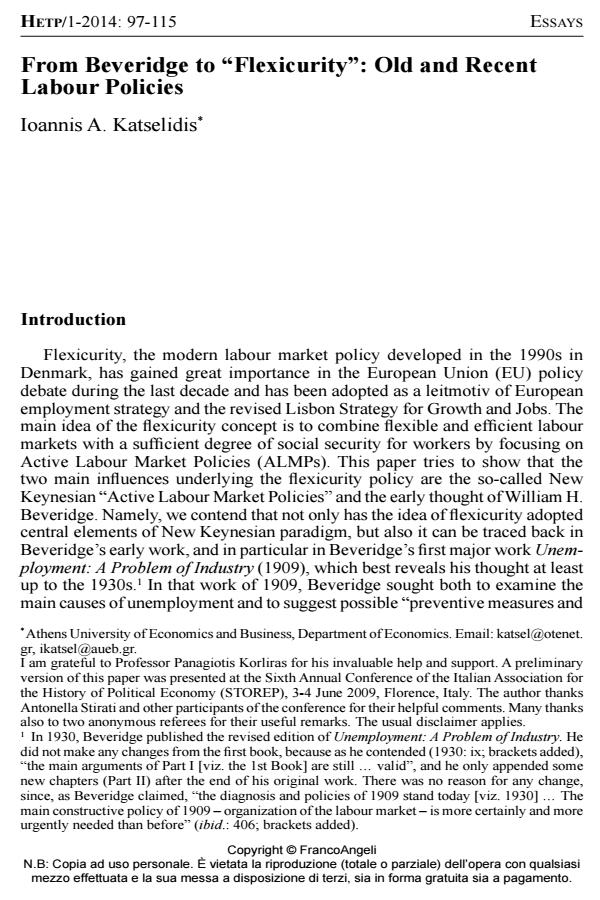From Beveridge to "Flexicurity": Old and Recent Labour Policies
Titolo Rivista HISTORY OF ECONOMIC THOUGHT AND POLICY
Autori/Curatori Ioannis A. Katselidis
Anno di pubblicazione 2014 Fascicolo 2014/1
Lingua Inglese Numero pagine 19 P. 97-115 Dimensione file 868 KB
DOI 10.3280/SPE2014-001004
Il DOI è il codice a barre della proprietà intellettuale: per saperne di più
clicca qui
Qui sotto puoi vedere in anteprima la prima pagina di questo articolo.
Se questo articolo ti interessa, lo puoi acquistare (e scaricare in formato pdf) seguendo le facili indicazioni per acquistare il download credit. Acquista Download Credits per scaricare questo Articolo in formato PDF

FrancoAngeli è membro della Publishers International Linking Association, Inc (PILA)associazione indipendente e non profit per facilitare (attraverso i servizi tecnologici implementati da CrossRef.org) l’accesso degli studiosi ai contenuti digitali nelle pubblicazioni professionali e scientifiche
The modern labour market policy of flexicurity has been adopted as a leitmotiv of the European employment strategy and the revised Lisbon Strategy for Growth and Jobs. This paper examines the two main influences behind the concept of flexicurity, namely the New Keynesian active labour market policies and the early ideas of William Beveridge. In particular, we contend that the flexicurity agenda originated from the New Keynesian employment policy agenda, which incorporates active measures for employment, aiming at both flexibility and security in the labour markets. These ideas and proposals can be traced back to William Beveridge’s work on labour market policy. Beveridge proposed a progressive and forward-looking labour policy, which combined flexibility and security together with active labour market measures, without disregarding the weaker labourers’ groups (e.g. casual workers). Thus, the paper shows that his policy proposition resembles the modern policy concept of flexicurity in such a degree that we can characterize Beveridge as the precursor of the flexicurity phenomenon.
Parole chiave:Beveridge, New Keynesianism, labour policy, labour market functioning, flexicurity
Jel codes:B31, E12, J08
Ioannis A. Katselidis, From Beveridge to "Flexicurity": Old and Recent Labour Policies in "HISTORY OF ECONOMIC THOUGHT AND POLICY" 1/2014, pp 97-115, DOI: 10.3280/SPE2014-001004